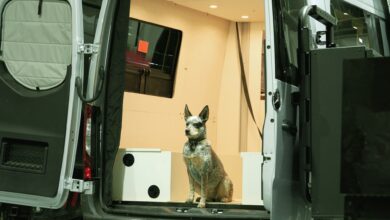Blog: Five Military Lessons to Improve the Retail Customer Experience
Retailing is a business model that is challenged by e-retailers and customer expectations that demand an ever-improving customer experience. Despite the pressure of e-retailers, traditional retail still delivers some of our best customer experiences that consumers desire and return to repurchase that same level of high service. Surprisingly, military leadership and military strategy skills can help retailers deliver some of their very best customer facing experiences.
The military offers concepts in leadership, planning, and technology that can be easily and rapidly adapted to enhance the effectiveness of front-line business employees that are charged with delivering.
Lesson One: Train Your Team for the Challenges of Today & Tomorrow
In the military, most training is hands-on and “do-as-I-do” training that reinforces the ability to perform in times of stress. The themes of training focus on training not only for the challenges of today, but also identifying and training to correct weaknesses in the organization and for identifying future challenges. Training for retail teams is critical because it both develops and retains talent and ultimately delivers an improved experience to the customer.
Lesson Two: Great Strategy Delivers by Creating Options for Success
Strategy is about finding, determining, and creating options that all reach the same goal or outcome. During my Special Forces training, our instructors loved the “What If this” happens scenario. What if your primary helicopter for medical evacuation fails to arrive? What if the enemy is twice the estimated size on the objective?
To help anticipate and plan for all these possible “What If” events, we had the P-A-C-E Primary-Alternate-Contingency-Emergency planning process (PACE).
In my military experience, we were always taught that “can’t” was never an option, we had to always find a way to accomplish the mission. PACE is a great tool for retail teams to help drive creativity in any process that effects the customer experience to find alternate and still effective methods to meet the customer’s expectation.
Lesson Three: Develop Retail Leaders That Lead by Example in All Actions
Leadership by example is that the leader personally sets the example in job performance and professionalism both large and small of what to do and how to do it. In the Army, the most senior leader always eats last – no matter what.
Central to leadership by example is the concept of the leader as a mentor and as a coach. Retail leaders that sweep the floors, help stock shelves, or deal with an angry customer, instead of a team member, display not only leadership by example but serve as examples that their employees will emulate.
Lesson Four: Train Employees with High Skills and Promote Initiative
Few people realize that the June 6, 1944, D-Day invasion hung in the balance during those first few critical hours. On the beaches, troops landed under deadly enemy fire, leaders were killed, and the airborne soldiers dropped the night before were scattered and unorganized. How then, less than 12 hours later, was success achieved?
Two factors explained the success: 1) high levels of training and 2) the concept of initiative.
American soldiers were relentlessly trained in both their own combat tasks and also in their leaders combat tasks. Furthermore, soldiers learned the tasks in classrooms, then perfected the tasks on training beaches, at night, in the rain, and in the snow so that no matter the conditions the tasks were performed correctly.
Therefore, when the plan needed to be adapted, everyone was expected to take the initiative to adapt their actions to make the plan a success.
Train retail employees for not only their jobs, but other jobs as well. Furthermore, retail training needs to emphasize the importance of initiative, so employees know they are expected to adapt their actions to meet the needs of the customers.
Lesson Five: Teach Your Teams to Improve Themselves
The military uses the After Action Review (AAR) to review and to learn from every activity. The purpose of AAR is to help a team understand what happened, what worked, what did not work, and then to formulate an improvement plan, as a team, to be better the next day.
In retail, an AAR can be as simple as gathering everyone together at the end of a shift for 15 minutes to understand one to two challenges for the day, what went well in meeting those challenges, and what needs to be done differently the next time to address the challenge.
Furthermore, the use of AAR’s create employees that view problem resolution as their responsibility. Employees see themselves as the solution to their problems.


